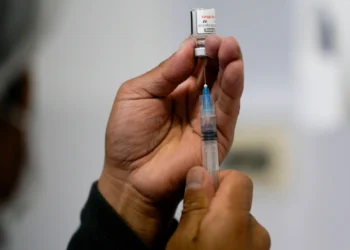China Intensifies Fight Against Chikungunya Virus Amid Rising Infections
Writing Time: August 06, 2025, 17:30 (U.S. Eastern Time)
China is battling a major outbreak of the mosquito-borne chikungunya virus, with over 7,000 confirmed cases primarily centered in the southern province of Guangdong. In response, authorities have launched wide-ranging containment efforts, including fines, disinfectant spraying, drone surveillance, and strict public health enforcement to prevent further spread.
Surge in Chikungunya Cases Prompts Swift Government Action
A significant chikungunya virus outbreak has struck southern China, particularly the industrial hub of Foshan near Hong Kong, prompting government agencies to initiate strict public health and environmental control measures. As of Wednesday, over 7,000 confirmed cases had been reported, with the rate of new infections beginning to slow, according to local health officials.
Chikungunya is a mosquito-borne viral infection that causes high fever, rash, fatigue, and severe joint pain. Although rarely fatal, it poses the greatest risk to young children, the elderly, and those with pre-existing medical conditions. The virus shares symptoms with dengue fever and is commonly found in tropical and subtropical regions.
Mosquito Control at the Core of Containment Strategy
China’s response has been focused on eradicating mosquito breeding grounds. Authorities have deployed teams to spray disinfectant in urban areas, including streets, office building entrances, residential zones, and construction sites — all common hotspots for mosquito activity.
Chinese state broadcaster CCTV showed footage of workers operating fogging machines and wearing protective gear as they moved through affected areas. In a method reminiscent of the COVID-19 response, some buildings are sprayed before workers and residents are allowed to enter.
Drones are also being used to monitor and identify standing water — a breeding ground for mosquitoes. Once detected, crews are dispatched to treat or eliminate these locations to prevent larvae from maturing.
Public Compliance Enforced with Fines and Penalties
China has imposed strict penalties to encourage public cooperation in mosquito control efforts. Residents and property owners who fail to remove standing water from containers such as bottles, pots, or buckets face fines of up to 10,000 yuan (approximately $1,400). In some cases, authorities have threatened to cut off electricity to enforce compliance.
This type of coercive health enforcement has become more familiar in China since the 2003 SARS outbreak and was notably used during the COVID-19 pandemic. The current approach underscores the government’s emphasis on aggressive, centralized responses to disease outbreaks.
Travel Advisories and Regional Impact
The U.S. State Department has issued a travel advisory warning citizens to avoid travel to Guangdong province, where the outbreak is concentrated. The advisory also covers other affected regions, including Bolivia, Brazil, and island nations in the Indian Ocean, where chikungunya cases have also surged.
China’s industrial cities such as Dongguan and Foshan are essential manufacturing hubs, and disruptions from public health measures could have ripple effects on international trade and logistics. However, Chinese authorities have indicated that economic stability remains a priority alongside public health.
Climate Conditions Worsen the Spread
This year’s heavy rainfall combined with unusually high summer temperatures has accelerated mosquito breeding cycles, creating ideal conditions for the virus to spread. These climate-related factors have made mosquito control efforts more urgent and complex, especially in densely populated urban areas.
Although the chikungunya virus is not transmissible between humans, the fast-spreading nature of mosquito-borne viruses demands immediate intervention to avoid broader regional or international public health emergencies.
Hospitals, Quarantine Measures, and Experimental Tactics
In the hardest-hit areas, including Foshan, patients diagnosed with chikungunya have been hospitalized for at least one week, even in mild cases. While a previously enforced two-week home quarantine has been lifted, hospitalization remains mandatory in some districts, according to local media.
Authorities are also experimenting with biological controls. Reports suggest some local governments have deployed fish that consume mosquito larvae in water bodies, and even introduced larger mosquito species to prey on smaller virus-carrying mosquitoes. These efforts are part of a broader public health campaign rooted in both traditional and modern vector control practices.
National Coordination Signals High-Level Concern
Meetings at the national level have been held to coordinate the response across agencies, indicating the central government’s serious commitment to containing the outbreak. Protocols are being updated regularly, with oversight from both provincial health commissions and the National Health Commission.
The Chinese government is reportedly aiming not only to stop the current spread but also to avoid the international scrutiny that accompanied its early handling of previous health crises. Preventing the disease from affecting global supply chains and undermining public trust appears to be a driving factor in the rapid response.
Outlook and Preparedness
While current data shows that new infections may be declining, experts caution that continued vigilance is essential. Vector-borne illnesses like chikungunya can re-emerge if environmental conditions remain favorable or if prevention efforts wane.
Global health agencies, including the World Health Organization (WHO), are closely monitoring the situation in China and other affected countries. Travelers to Southeast Asia, South America, and tropical regions are advised to use mosquito repellents, wear long sleeves, and stay indoors during peak mosquito hours as preventive measures.
This article was rewritten by JournosNews.com based on verified reporting from trusted sources. The content has been independently reviewed, fact-checked, and edited for accuracy, neutrality, tone, and global readability in accordance with Google News and AdSense standards.
All opinions, quotes, or statements from contributors, experts, or sourced organizations do not necessarily reflect the views of JournosNews.com. JournosNews.com maintains full editorial independence from any external funders, sponsors, or organizations.
Stay informed with JournosNews.com — your trusted source for verified global reporting and in-depth analysis. Follow us on Google News, BlueSky, and X for real-time updates.












